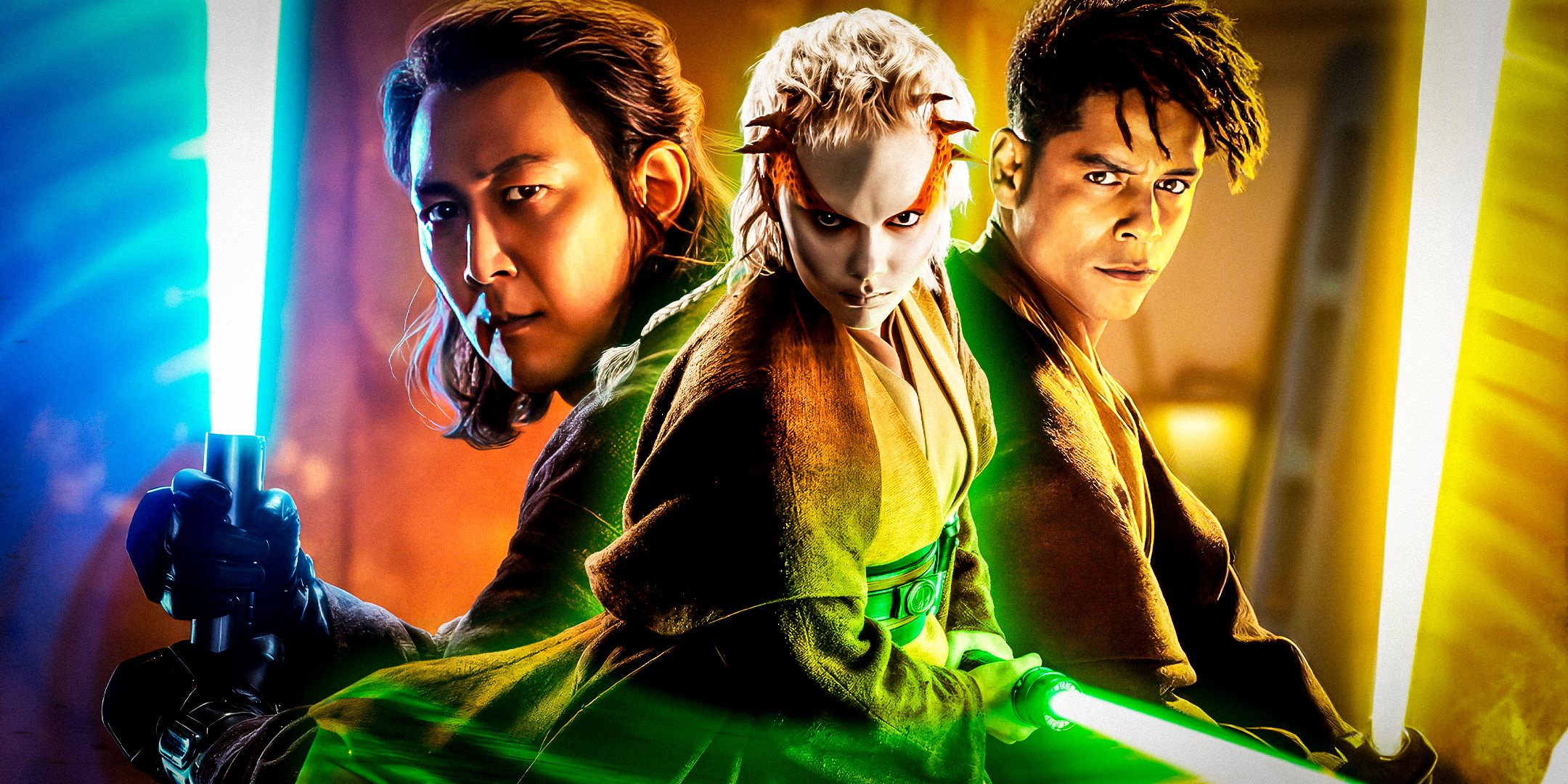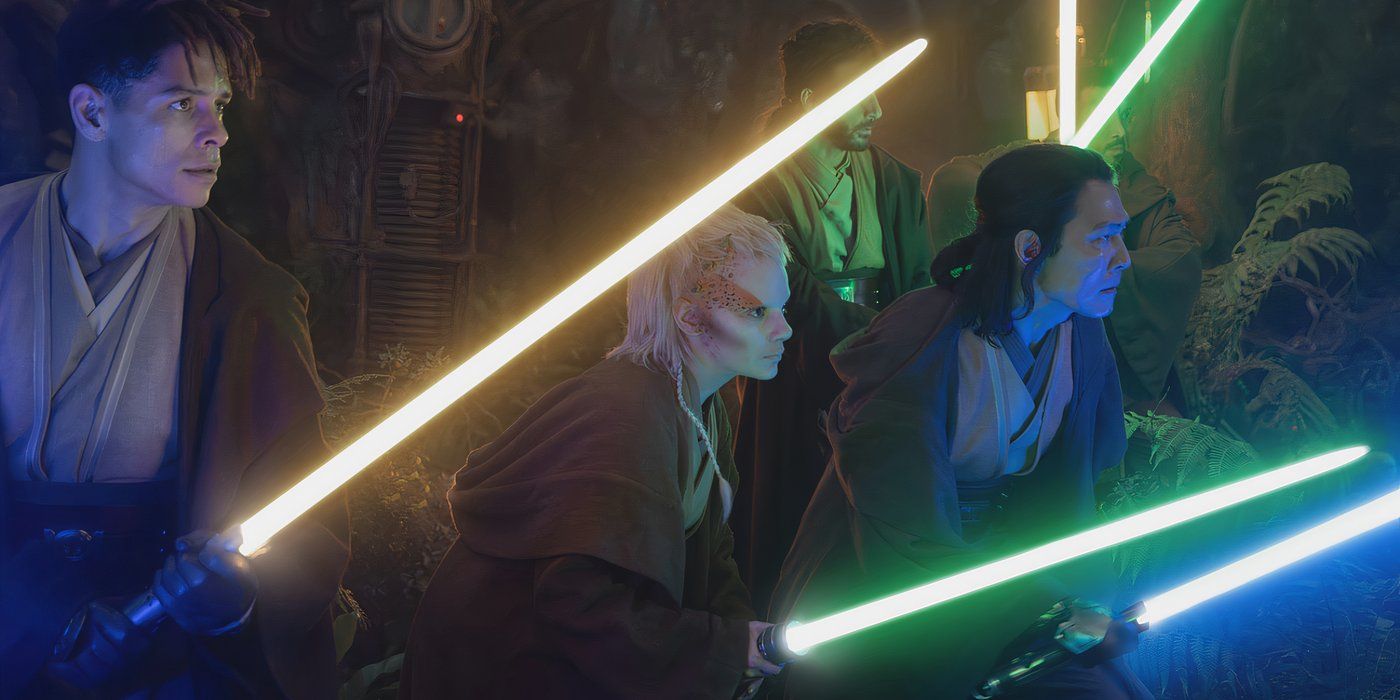
The High Republic Jedi’s individuality is reflected in their lightsabers – not just their hilts but the colors of the blades, too. While it’s clear that, in the years since Star Wars began, less and less significance has been placed on the color of someone’s lightsaber and how it relates to their character, the High Republic has used the currently established range of lightsaber colors to its advantage, much more than George Lucas ever did. This is more apparent than ever when comparing the massive fights in Star Wars: Episode II – Attack of the Clones and The Acolyte episode 5, “Night.”
The Acolyte’s Range Of Lightsaber Colors Make The Action Incredibly Effective










In The Acolyte episode 5, a troop of Jedi comes face to face with a so-called Sith Lord. Though the Jedi outnumber this dark sider significantly, he easily picks them off one by one, resulting in what is perhaps one of Star Wars’ most brutal action sequences yet. The massacre is fast-paced, terrifying, and hard to tear your eyes away from, but what is truly remarkable about this particular scene is how easy it is to follow the action and, most importantly, who is fighting.
Within this group of Jedi, three lightsaber colors are being used: the classic green, the age-old blue, and the new, more modern shade of yellow. Even though it’s dark in the scene, the viewer knows exactly which main characters are engaged in the fight and when. Jecki uses green lightsabers, Yord uses a yellow one, and Master Sol wields a blue lightsaber. Even when surrounded by unnamed Jedi, we know who is engaged with the Sith Lord. Compare this to the arena battle in Attack of the Clones, where the only visible Jedi was Mace Windu, and the difference is stark.
Star Wars’ New Approach To Lightsaber Colors Is A Huge Improvement










Famously, Samuel L. Jackson wanted Mace Windu’s lightsaber to be purple because he wanted to find himself on the screen when surrounded by dozens, if not hundreds, of other Jedi. He clearly had the right idea, and perhaps that change was the push Star Wars needed to embrace more lightsaber colors down the line. By sticking to only green and blue for the Jedi in the Star Wars prequels, Lucas limited the impact of the action during the battle of Geonosis. From far away, the action essentially blurred together, making it hard to keep track of the fight unless close-up shots were involved.
By using purple, yellow, white, orange, and new shades of blue and green, the franchise’s major action sequences have become much more dynamic.
Though The Acolyte is a smaller battle, using just three different Jedi lightsaber colors instead of two made the action much easier to digest. If, as some recent Star Wars stories have suggested, lightsaber color isn’t necessarily dependent on a Jedi’s personality, there’s all the more reason to use a more colorful, diverse array of lightsabers in the franchise’s storytelling. By introducing purple, yellow, white, orange, and new shades of blue and green, the franchise’s major action sequences have become much more dynamic, as proven by Star Wars: The Acolyte.
New episodes of The Acolyte premiere Tuesdays exclusively on Disney+.





